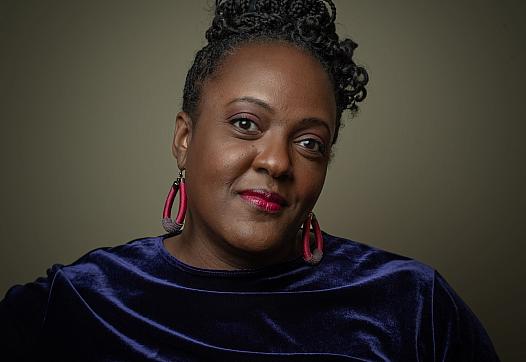For One Environmentalist, Warning Black Women About Dangerous Beauty Products Allows Them to Own Their Health
The story was originally published by the Inside Climate News with support from our 2023 National Fellowship.
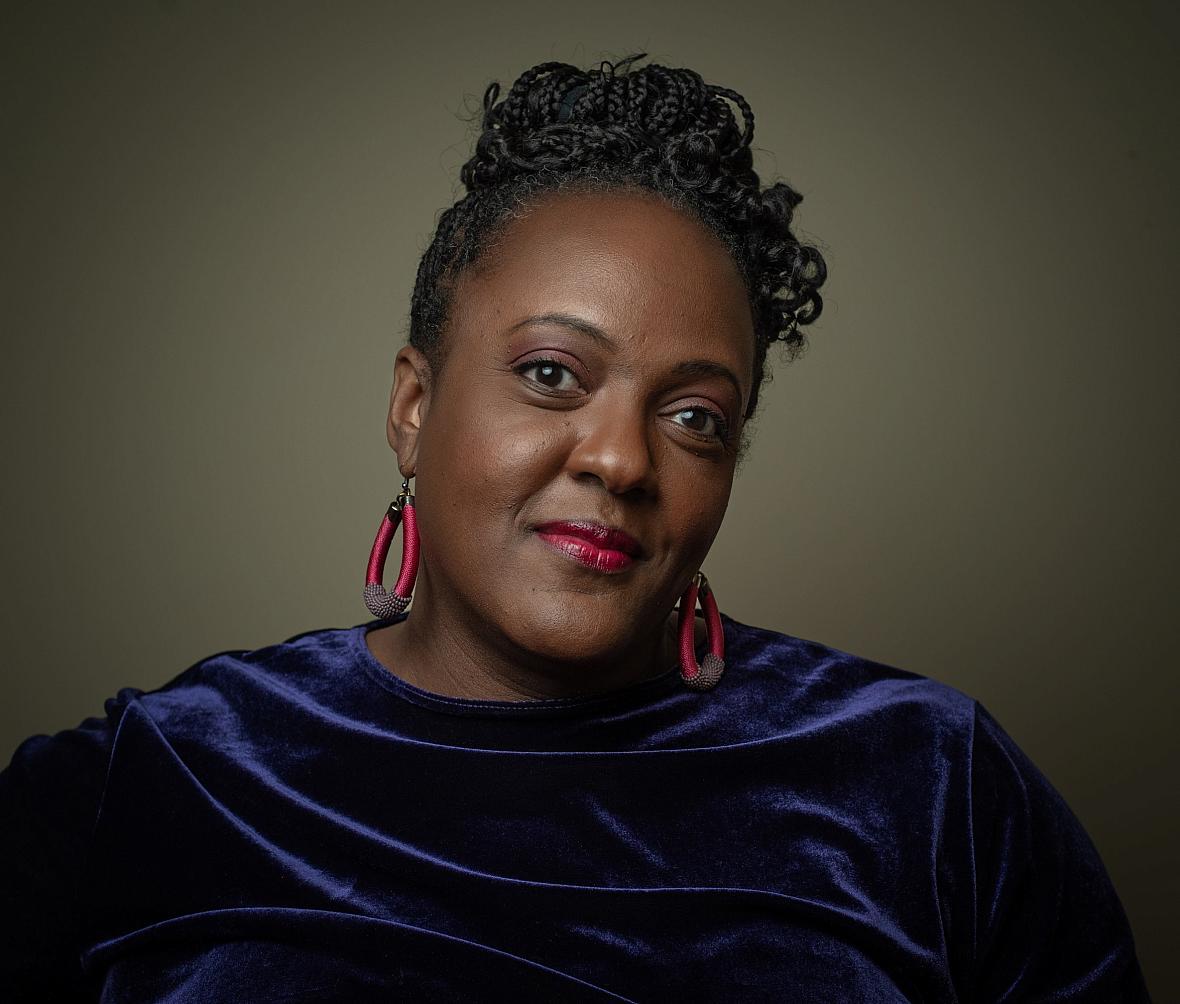
Heather McTeer Toney, a former official with the Environmental Protection Agency, has made it her personal mission to raise awareness among Black women, in particular, and in the African American community, in general, about the potential harms of chemicals in beauty products and other items.
Credit: Timothy Ivy
Dereliction of Beauty: Third in a series on how lax regulation of beauty care products victimizes women of color.
When Heather McTeer Toney thinks about the disproportionate harms that she and many other Black women have suffered from toxic substances, some of her most enduring memories take her back decades to the process of straightening her naturally curly hair—and the burn.
“Think about that for a second,” she said in a recent interview. “Chemical burns on a young Black girl’s scalp was a rite of passage.”
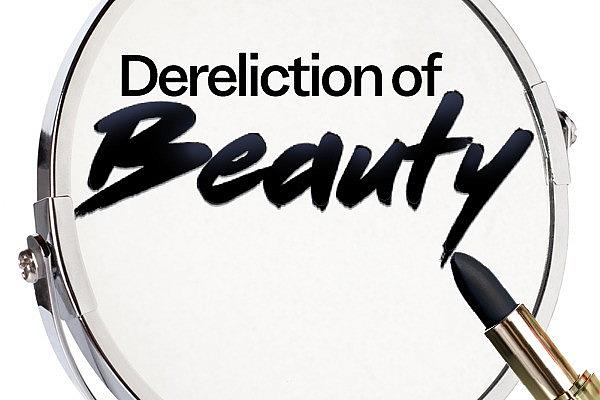
Now a leading environmental justice advocate and executive director of Bloomberg Philanthropies’ Beyond Petrochemicals Campaign, McTeer Toney, 47, argues in a new book, “Before the Streetlights Come On: Black America’s Urgent Call for Climate Solutions,” for an expansive consciousness around climate change and public health that extends from air and water contaminants to toxic chemicals in beauty products.
“If you live right in the shadow of a plant, not only are you dealing with the pollution that’s coming from that plant, but it could have an impact on your skin,” said McTeer Toney. “And then the products that you need to treat that include toxic chemicals.”
For McTeer Toney, a Mississippi-based lawyer who from 2014 to 2017 oversaw eight southern states as a regional administrator with the Environmental Protection Agency, sharing narratives about climate, public health and the environment has become a north star: She said it is the key to making change. The same is also true when it comes to beauty.
“My mother says she wishes she’d known years ago what the health impacts were for hair relaxers,” McTeer Toney said. “And she was ecstatic when I decided I wasn’t going to put any more relaxers in my hair.” she said. Her mother no longer perms her hair, either.
Now, Black people are not only “owning our own beauty,” she said, “but owning our own health at the same time.”
“For people of color, that has not always been our option,” she added. “Now it is our option to own our health, own our beauty, own and hold accountable those who have not been doing ethically what has been in the best interest for humanity.”
Disproportionate Harms and Cultural Norms
Because Black Americans are, according to one study, 75 percent more likely than other Americans to live in so-called “fenceline communities” adjacent to refineries and other locations that emit harmful exhaust and other toxins, Black women are at greater peril from air pollution and other health risks.
Researchers say that Black women often also bear the weight of history through their disproportionate use of cosmetic products that contain potentially harmful chemicals—largely unregulated substances that change the texture of one’s hair, lighten one’s skin color or treat other skin issues, and attack body odor.
In addition to scientific studies examining the connection between the often toxic substances in beauty products and a variety of illnesses, there is a growing body of research exploring the social and cultural origins of the practices that prompt people, particularly Black and brown women, to place their health at risk by using unsafe cosmetics.
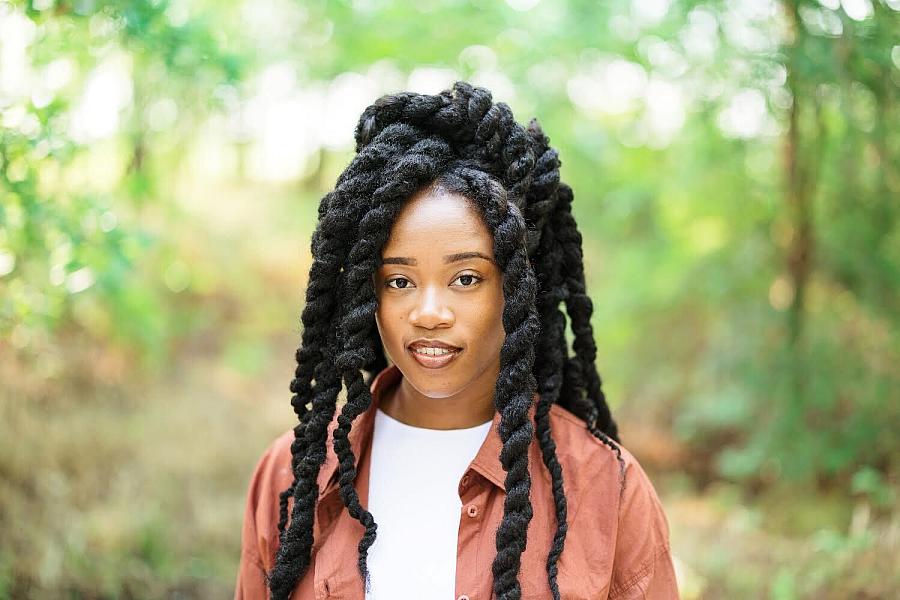
Elissia Franklin, an analytical chemist with the environmental research group Silent Spring Institute.
Credit: Ashley Jock
Many chemical relaxers that are marketed almost exclusively to Black women contain ingredients like sodium hydroxide—commonly known as lye—a substance so corrosive that it almost always damages the skin of people who are having their hair permed.
Like many researchers and advocates, Franklin lauds the Modernization of Cosmetics Regulation Act (MoCRA), passed by Congress late last year, which goes into effect later this month.
The law represents the biggest expansion of the Food and Drug Administration’s regulatory authority over the beauty industry in at least six decades. The law gives the FDA new powers to order mandatory recalls if cosmetic products are deemed unsafe, compels manufacturers to produce a complete list of the ingredients in what they sell and requires companies to share serious adverse health reactions that consumers experience when using their products with the agency.
Despite those changes, Franklin said the measure is “a drop in the bucket” because it does not ban, or require that consumers be notified of, the most toxic substances used in beauty products, including mercury, formaldehyde, parabens, phthalates and phenylenediamines.
Franklin said she was encouraged when FDA officials announced they were taking the first step toward banning formaldehyde, a known carcinogen that’s commonly used in hair straightening products. The agency’s decision came after the release of a study last year by the National Institutes of Health (NIH) that found increased rates of uterine cancer among women who use hair straightening products.
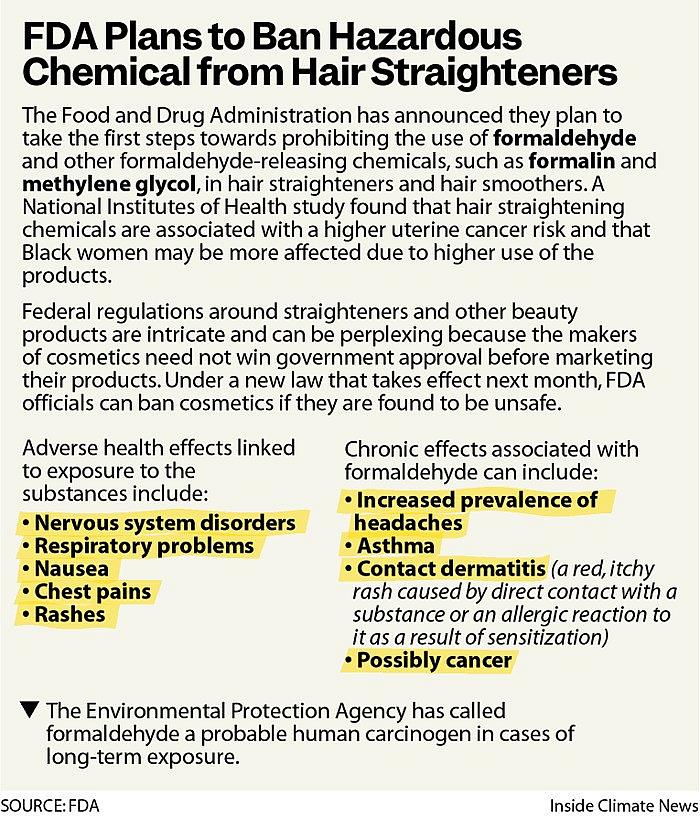
The NIH study amplified work that had been undertaken by many researchers, Franklin said.
“It was a breath of fresh air to start to see those connections in a scientific space because intuitively, if you’re putting these strong chemicals on your body, you don’t assume that it will result in something positive,” she said. “And that’s where my science brain is wanting to know the exact why, and can we reformulate these products? Because at the end of the day: OK, we see this connection, but how does it actually get change to happen within our community?”
“Layers of Gendered Racism”
For many public health advocates, addressing the distinctive harms that have been experienced by Black and brown women as a result of using cosmetics is considered part of an effort to achieve “beauty justice”—an aspect of the environmental justice movement, which aims to rectify the disproportionate burden from environmental problems faced by people of color and those with low incomes through policy changes and other measures.
One researcher, Ami Zota, an environmental health expert at Columbia University, has another name for it: “the environmental injustice of beauty.”
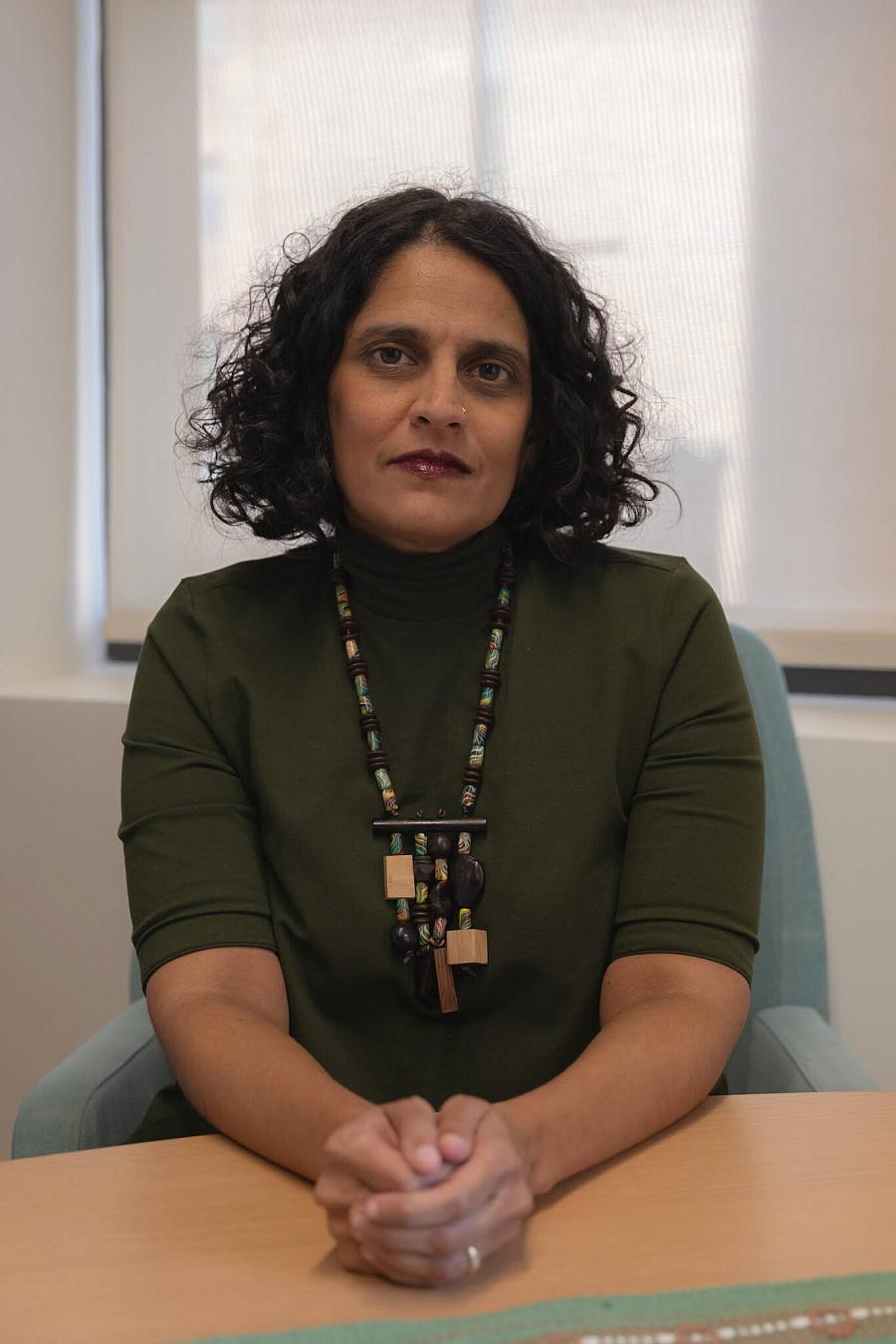
Dr. Ami Zota sits for a portrait in her office at Columbia University in New York, New York on October 25, 2023.
Credit Caroline Gutman
Zota’s most recent study focused on the use of so-called “intimate care” products, including vaginal douches and deodorizers, which—unlike tampons and other menstrual products—are not considered essential from a public health standpoint. Black women, Zota’s research has found, use such products at twice the rate as white women.
The use of douches and deodorizers is relevant from a public health standpoint, researchers say, because of links between those products and pelvic inflammatory disease, cervical cancer, ectopic pregnancy, and increased transmission rates of HIV and other sexually transmitted infections. Because of those risks, physicians recommend that women avoid douching.
But the practice persists, especially in the Black community, because of what Zota says are “layers of gendered racism.”
“There is a stigma that is superimposed on all women because they’ve been conditioned to believe that vaginal odors are unhealthy or unnatural or should be kind of covered up,” Zota said. “Those pressures, and the consequences of those pressures, have been particularly superimposed on women of color, especially Black women.”
Bhavna Shamasunder, an associate professor of urban and environmental policy at Occidental College, who, like Franklin, collaborated with Zota on the intimate care products study, said that manufacturers of personal care products often frame routine bodily functions—such as odors and the skin darkening that occurs during pregnancy—as matters that require the use of douches, skin lighteners or other cosmetics.
“The beauty industry paints these things as problems that you can fix by buying a whole array of products,” she said.
For those with low incomes, that kind of marketing can be potent because many of the products that contain harmful chemicals are less expensive than the products that don’t have them.
“If you’re trying to avoid certain products—and want to buy phthalate-free, paraben-free, fragrance-free—it’s expensive,” Shamasunder said. “So if you’re poorer, it’s harder for you to buy safer products—and low-income communities, in particular, all over the country face that.”
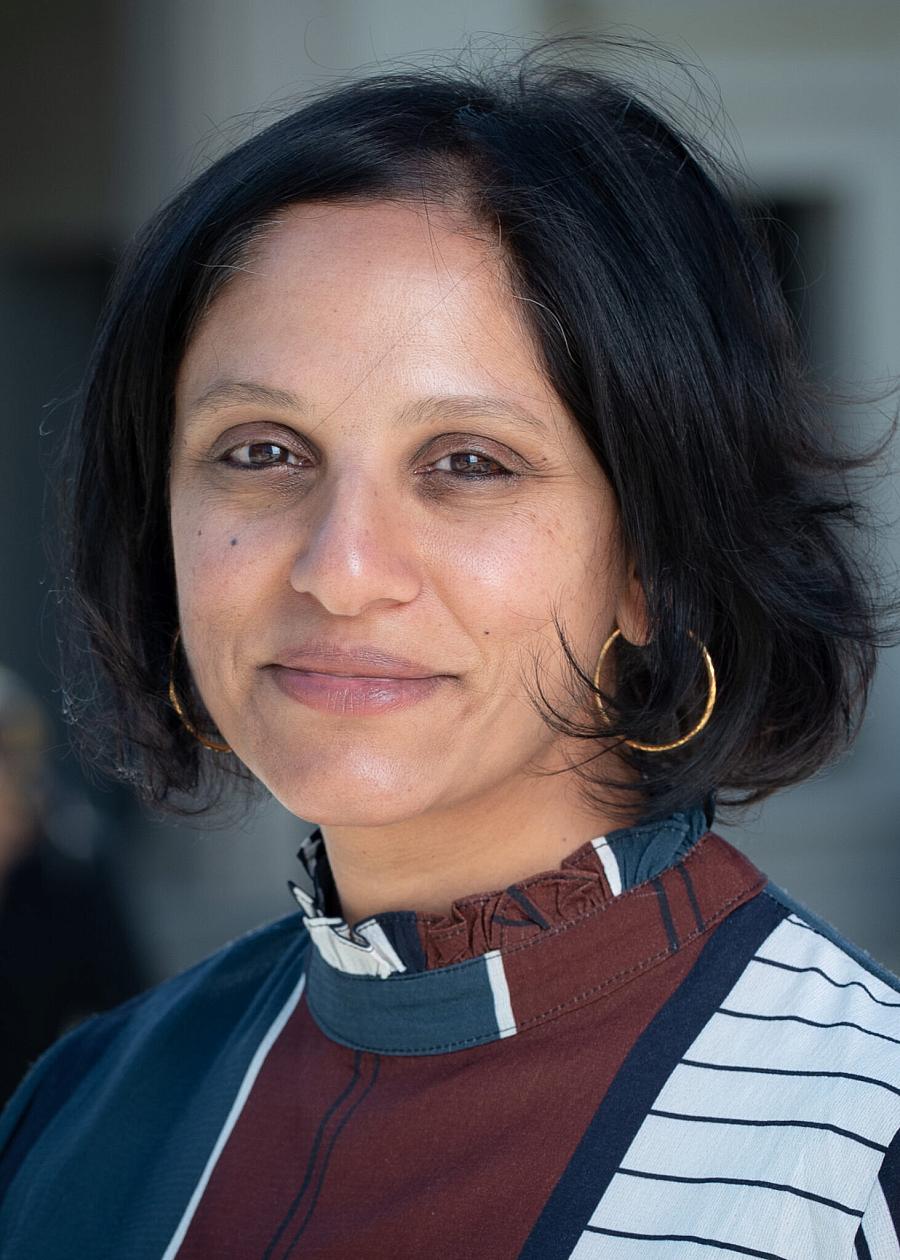
Bhavna Shamasunder, an associate professor of urban and environmental policy at Occidental College.
Credit: Marc Campos
Shamasunder also said that many consumers are unaware that oil and gas manufacturers also produce petroleum-derived substances that are used in the manufacturing of beauty products.
“The fossil fuel industry has been quite clever,” Shamasunder said. “I think about all of the different products that can come after the point of refining—you get the fuel that goes into your car. And then there’s also all these byproducts of the fossil fuel industry: the plastics that go into packaging, petroleum derivatives, like Vaseline, that go into beauty products.”
Those connections, Shamasunder said, underscore the links between the quest by advocates for beauty justice and environmentalist concerns about climate change.
“This post-World War II fossil fuel economy is really also a plastics economy and a consumer products economy,” Shamasunder said. “And all of that is linked with climate, because we know that—burning them, producing plastics, burning plastics, all of it—is this really intense cycle of fossil fuel production that we’re kind of enmeshed in.”
To most consumers, this connection is unclear, she said.
“It’s really hard for people to extract that when you buy a deodorant at the grocery store or pharmacy, like, what is the story of that product? It’s been obfuscated, it’s become invisible, and it’s hard for people to make those links,” Shamasunder added.
“Less Oversight and Less Concern”
For U.S. Rep. Shontel Brown, a Democrat from Ohio, advocating for change is deeply personal. In an interview with Inside Climate News, she acknowledged that—like many Black women—she has grappled with “insecurities” about her hair, and spent countless hours undergoing chemical relaxer treatments to resolve them.
In recent years, as she learned more about the dangers of harmful chemicals in those products, particularly formaldehyde, Brown said that she began moving away from using them and is now “completely relaxer free.” The congressman also wonders if a case of uterine fibroid tumors in 2019, which have been linked to some chemicals, might be related to years of using chemical hair straighteners.
In March, Brown and Rep. Ayanna Pressley, a Democrat from Massachusetts, sent a letter to FDA officials asking that they “conduct a thorough and transparent investigation to determine whether publicly available chemical hair straightening products contain carcinogens that lead to a higher risk of uterine cancer.”
“These products—that some of our colleagues probably don’t know exist—but have used and have been marketed aggressively and extensively to Black women, have had a disparate impact on our bodies,” Brown told Inside Climate News. “And so this is another example of how racial disparities develop: As we noted in our letter, 50 percent of the products advertised for Black women have harmful chemicals, where only 7 percent of white products marketed to white women do.”
Brown said she was encouraged by the additional authority to oversee beauty products that MoCRA will extend to FDA officials at the end of the month.
“It’s beyond obvious that the law needed to be updated,” Brown said. “And the fact is, cosmetics have fallen behind so many other consumer products and how closely they are regulated. There’s a layer of racism involved in that, especially as it relates to the case of Black women. There’s less oversight and less concern.”
Robert Bullard, who is considered the “father” of the environmental justice movement, said he welcomed all efforts to close the gap between concern and action.
Bullard said that it’s past time for federal officials to take whatever steps are necessary to ensure that products are safe.
“We should not be using anything and applying anything to our bodies that is going to hurt us,” said Bullard. “Whether it’s beauty products that we use, whether it’s the skin products, or the hair products or other kinds of products. We need to get the poison out—that’s what we just have to do. And it should not be controversial or a subject for debate.”
“And we need to move on it,” he added. “And just because it may not be something that the general population may be exposed to doesn’t mean that we should move as fast as we can to eliminate these elevated risk and health impacts.”
The Most Credible Voices
McTeer Toney said there’s a saying she often heard growing up: “Kill me, make me beautiful.”
“I don’t know where that came from, but it was always around the time that people were getting ready for prom or homecoming and you’re trying to get into a dress or do all your makeup,” she said. “And it was the association of, like, pain in order to be pretty.
“The products that Black women are using, we use them in order to meet a certain beauty standard—a Eurocentric beauty standard,” said Elissia Franklin, an analytical chemist with the environmental research group, Silent Spring Institute. “And in order to achieve that, in certain cases, it requires more, stronger chemicals.”
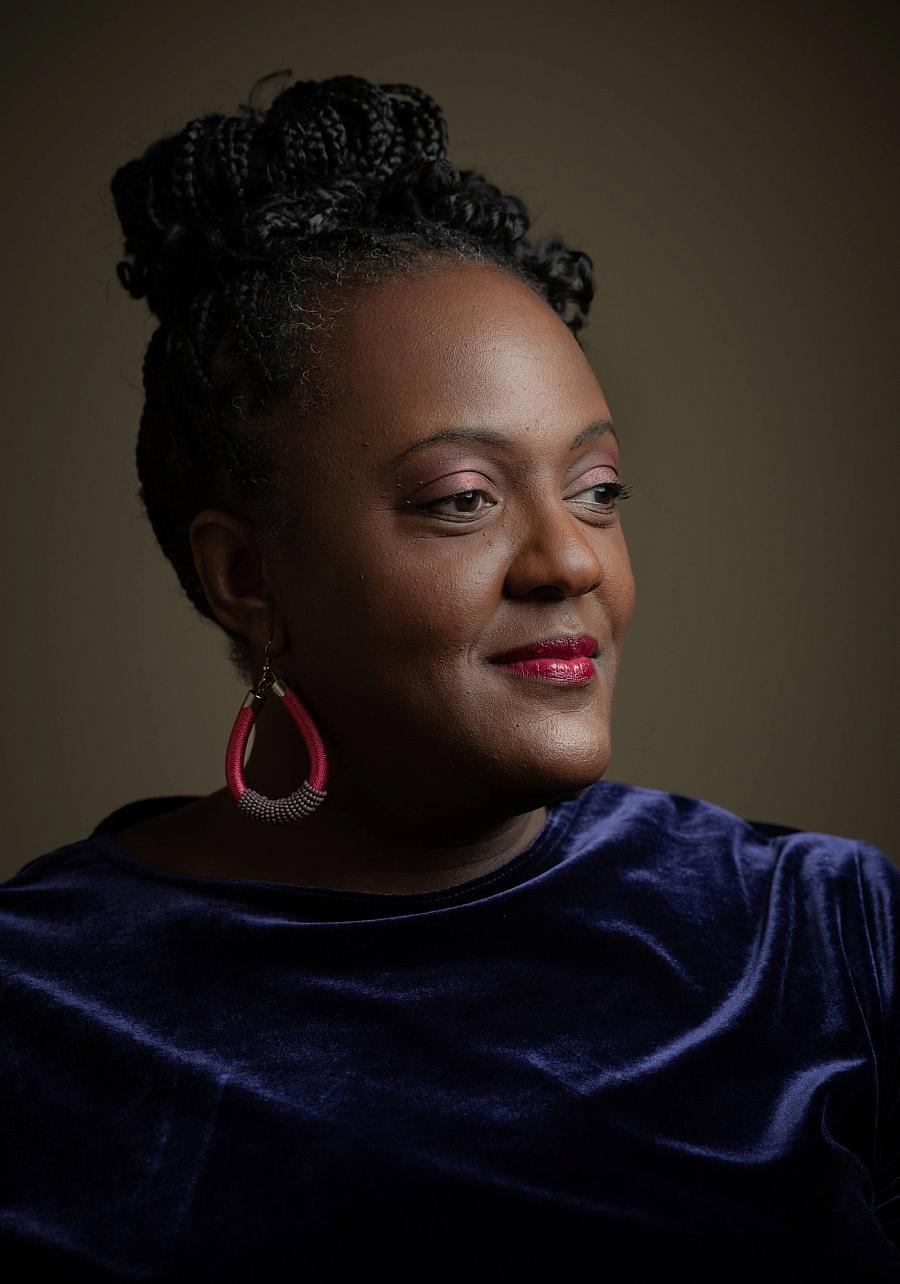
Heather McTeer Toney pictured in Oxford, Miss. on Dec. 15.
Credit: Timothy Ivy
In her new book, McTeer Toney makes a compelling—and sobering—argument for African Americans to take a lead role in the broader public conversation about climate change and public health: Because Black people routinely bear the brunt of environmental harms, theirs may also be the most credible voices when developing climate solutions.
McTeer Toney asks Black communities to leverage their buying power—which, according to federal data, was estimated at $976 billion in 2020—and push for clean energy, environmental justice at the personal and community levels, and infrastructure development. As a result, she wrote, African Americans can strengthen their communities “economically, socially and culturally, all in the name of climate action.”
At one point in the text, McTeer Toney references The Old Testament’s book of Esther, in which the title character—the Jewish wife of a Persian monarch—must take action to save the lives of her people.
“I feel that Black Americans are in our Esther moment,” McTeer Toney writes. “Despite the trauma of our history, struggle, separation, abuse and neglect, we have purpose and power for the world that has yet to be fully embraced. Who knows? It could be for such a time as this. What we do know is that without our engagement to secure justice, participation with ideas for innovation and creativity for influence, the survival of all people is at risk.”

